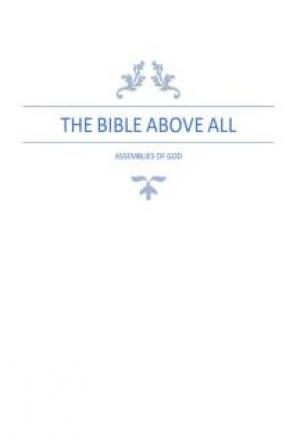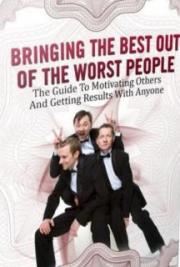Chapter 9: Sample Carb Cycling
Programs
As we’ve already pointed out, there are many kinds of carb cycling program. This makes it hard to decide how you’re going to go about getting started. If you’re ready to put a carb cycling plan of your own in place, here are some sample regimes. They will help you to decide which work best for you.
Two of the most popular programs are:
The High/Low Program
The High/Medium/Low Program
Let’s look at the High/Low Program first.
This method involves having a high carbohydrate day then a low carb day. A high carbohydrate day involves eating more than 150
grams of carbs. A low carbohydrate day involves eating under 100 grams of carbs. The exact measurements and requirements will vary to suit each dieter. However, let’s imagine we’re planning a program for a 29-year-old male. Imagine he weighs Page | 63
190 pounds and is 5 feet 8 inches tall. The total number of calories he needs to maintain weight is 190 x 15 i.e. 2850. He also weight trains three days a week. We’re going to look at a few programs to suit his statistics to meet different goals.
Firstly, let’s look at a suitable program for him if he wanted to lose fat.
With this goal in mind, he would need three days of high carbohydrates. These would be at the level of calories required for maintenance. He would then follow this by four days of low carb eating. These four days would all be 600 calories below this maintenance figure. He would choose his three weight training days as his high carbohydrate days. His non-workout days would be his low carbohydrate days.
His program would, therefore, look something like this: Training day intake – 2850 calories
Protein intake – 190 grams
Carbohydrate intake – 375 grams
Fat intake – 65 grams
Rest day intake – 2250 calories
Protein intake – 190 grams
Page | 64
Carbohydrate intake – 100 grams
Fat intake – 120 grams
His total deficit of calories every week would be 600 x 4 i.e. 2400
calories. This would help him to lose just under 1 pound of fat every week. While this may not sound impressive, it’s important to remember that rapid fat loss isn’t the only goal. The more quickly fat is lost, the greater the chance of losing muscle too.
This is the opposite of the aim of carb cycling.
What about if the same individual wanted to try carb cycling to gain muscle?
In this case, his calorie intake needs to be adjusted slightly. He needs a surplus of calories in this instance. This will help him to recover after working out. It’ll also promote more muscle tissue growth. His goal is to have a surplus of 300 calories on his training days. On his low carb days, he’ll stay at his recommended maintenance intake. His program would, therefore, look like this:
Training day intake – 3150 calories
Protein intake – 190 grams
Carbohydrate intake – 440 grams
Fat intake – 70 grams
Page | 65
Rest day intake – 2850 calories
Protein intake – 190 grams
Carbohydrate intake – 300 grams
Fat intake – 100 grams
You’ll probably notice that the carb intake on a low carb day is surprisingly high. Earlier, we said the carb intake on a low carb day should be under 100 grams. Yet in this case, the individual has a high energy expenditure. Therefore, avoiding excess fat is important. Fat can be stored easily when there’s a caloric surplus. Therefore, avoiding eating too much fat is important to prevent fat gain. Meanwhile, carbs are essential to refill muscle glycogen and promote recovery. This aids in training performance.
With this program, the individual is cycling carbs, however not so drastically as he would to lose weight.
Some people find keeping carb intake to under 100g on their low carb days helps them to stay leaner. However, caloric intake must be kept at the same level overall, even on off days. This will ensure a net caloric surplus is maintained over the entire week.
What about the high/medium/low method?
Page | 66


Well, this involves having a high carbohydrate day then a medium carbohydrate day. Finally, a low carbohydrate day will follow on. The cycle will then repeat. A high carbohydrate day involves eating over 150 grams of carbs. A medium carbohydrate day involves eating between 100 grams and 150 grams of carbs.
A low carbohydrate day involves eating under 50 grams of carbs.
Now, let’s imagine our dieter. She’s a 31-year-old woman who is 5 feet 5 inches tall. She weighs 150 pounds and works out three days per week doing weight training. Her total calories for maintenance are 150 x 15 (2250).
Page | 67
If she wants to lose fat, this is a sample carb cycling plan for her.
She should have two days of high carb intake. The calorie intake will be set at her maintenance level of 2250 calories. On her two medium carb days, her caloric intake will be 300 calories under this level. On her two low carb days, her caloric intake will be 600
calories under her maintenance level. Rather than aligning the high carbohydrate days with her training days, the intake is: staggered. Training should be carried out on medium and high carb days though, not low carb days.
Her program will, therefore, look like this:
High carb day intake – 2250 calories
Protein intake – 150 grams
Carbohydrate intake – 245 grams
Fat intake – 75 grams
Medium carb day intake – 1950 calories
Protein intake – 150 grams
Carbohydrate intake – 150 grams
Fat intake – 80 grams
Low carb day intake – 1650 calories
Protein intake – 150 grams
Carbohydrate intake – 50 grams
Page | 68
Fat intake – 95 grams
Over the week, the plan could look like this:
Monday – training day – high carb
Tuesday – training day – medium carb
Wednesday – rest day – low carb
Thursday – training day – high carb
Friday – rest day – medium carb
Saturday – rest day – low carb
Sunday – rest day – low carb
If the same individual wanted to gain muscle through carb cycling, the plan would look different. A caloric surplus will be necessary so muscle tissue can grow and recover. Therefore, a 200-calorie surplus will be required on a training day. On rest days, she should eat the number of calories required for maintenance.
Her program will, therefore, look like this:
High carb day intake – 2450 calories
Protein intake – 150 grams
Carbohydrate intake – 340 grams
Fat intake – 55 grams
Page | 69
Medium carb day intake – 2450 calories Protein intake – 150 grams
Carbohydrate intake – 240 grams
Fat intake – 100 grams
Low carb day intake – 2250 calories
Protein intake – 150 grams
Carbohydrate intake – 150 grams
Fat intake – 115 grams
You may have noticed the medium carb day requirement is higher than suggested earlier. The same reasons apply in this case as applied in the above example. Eating excessive dietary fat in such circumstances can lead to the storage of fat. Therefore, avoiding eating too much fat helps to prevent fat gain. Carbs are vital in recovery and in refilling the muscle glycogen. This helps to boost training performance.
The individual in question here is still carb cycling. However, her plan isn’t as drastic as it would be if she wanted to lose fat. If you use this method to gain muscle mass, you can adjust the carb and fat numbers to suit you.
Some people find if they keep their carbohydrates to under 100g on rest days, they stay leaner. This may work for you, but you’ll Page | 70
still need your caloric intake to remain at the maintenance level even on rest days. This will ensure you’re in a caloric surplus overall during the week.
The key nutrient for maintaining and gaining muscle is protein.
Nevertheless, it doesn’t have to be exceptionally high, whether you want to gain muscle or reduce fat. 1g of protein for each pound of your bodyweight is ideal. Fat and carb totals are important too. However, they can be tailored to your energy expenditure and preferences.
How about if you want to maintain your bodyweight? You can still achieve this goal with carb cycling. You simply need to choose one of the above methods. You then adjust your rest day and training day intakes, so they balance out over the week. One way of doing this is to consume 200 calories more than your recommended maintenance level on a training day. On a rest day, you should have 200 calories under this figure. So, if your maintenance intake is 2500 calories, you’d have 2700 on training days and 2300 on a rest day.
Page | 71

Page | 72

Chapter 10: How do I get Started
with Carb Cycling?
Although the idea of carb cycling is appealing, it’s difficult to know how to get started. This way of eating can be quite complex.
Therefore, you need to know as much as possible about carbohydrates and how they work in the body. You also need to understand how to choose the right carb cycling plan for you.
Page | 73
The information we’ve provided in the earlier chapters will help you to determine the right program for you. However, you could probably benefit from a few expert tips to get you off to the right start. Here is some good advice to point you in the right direction.
First, we’ll look at how to avoid the major pitfalls of carb cycling.
Here are some of the most common:
Focusing solely on carbs while ignoring other macros. Some people are confused by the name “carb cycling”. It’s a misnomer. Carb cycling isn’t only about carbohydrates. It’s about balancing your calorie intake over the week. If carb intakes are lowered on a rest day, more protein and fat need to be eaten to compensate. It’s only by doing this that fat loss can be maintained in the long term.
You need to know the number of calories you need to consume to maintain weight first. This enables you to plan how much you need to adjust your intake to suit each rest or training day. On a rest day, take 10 percent to 20 percent off your calorie intake from carbohydrates but don’t increase your protein or fat intake. There are four calories in each gram of carbohydrate. Therefore, if you eat two Page | 74
thousand calories each day, cut your intake of carbs by 50
grams on rest days.
Your calorie intake is varying too much. The 10 percent to 20
percent rule specifically applies to carbs. However, you shouldn’t ever have over 33 percent difference in the total amount of calories consumed over the week. Too much variance hurts recovery. It also makes it more difficult to adhere to the carb cycling regime. You can remedy this by eating a minimum of 68 percent of your usual energy intake on low carb days.
You’re using your high carb days as a cheat day. High output days aren’t an excuse to eat anything you like. If you do this regularly, unhealthy eating habits start to set in. You can fix this by focusing mainly on foods that are dense in nutrients.
Eat more whole foods such as oats and potatoes on your high carb days. Eat more nuts and eggs on your low carb days. You’ll feel full but won’t ruin your overall regime.
Now you know what to avoid, here are some tips for every carb cycling program.
Base your chosen dietary approach on your activity level and basal calorie needs.
Page | 75
Choose your refeed days well in advance.
Always adhere to your regime until your refeeding day.
Keep all your decisions based on the outcome. Different strategies for refeeding work best for different body types.
You should take body composition tests to check you’re on the best track for you.
Exercise on your refeeding days. This will ensure the best body composition results.
On refeed days eat more carbs in the morning and at times when you’re doing a lot of physical activity.
On low carbohydrate days, eat more leafy greens. They are virtually free of calories but add more bulk to your plate.
You’ll find a full-looking plate more satisfying.
Eat wholefood fats on low carb days. Cold water fish, nuts, grass-fed butter, eggs, avocado, and coconut oil are all good choices.
Page | 76
Measure your carbs and fats. This will help you to track how many calories you consume. On a normal day, measure your carbs too. A lot of the time, we underestimate how much protein we’re eating and overestimate the amount of fat and carbs.
Don’t reduce carbs without eating more fat. Your body requires either fats or carbs for energy. That means you’ll need to fuel up for the day in one way or the other.
Avoid skipping meals. You might be tempted to avoid eating to lose more weight on normal or low carb days. This is a bad idea. It could result in your body breaking down more muscle.
Avoid winging it. Deciding to try carb cycling is very different to the reality of doing it. You’ll need to be dedicated and keep detailed records of your intake at each meal. You’ll need to do this every day for weeks on end.
There’s no way to look at an ingredient and know its calorie and macronutrient contents. Therefore, you’ll need to measure and record accordingly. Apps such as MyPlate and My Fitness Pal are good for this.
Page | 77
Always choose foods that support your overall well-being, even on high carb days. Huge mounds of pasta and white bread, gallons of sugary drinks and tons of cake won’t help your health. Opt for complex carbs that are rich in fiber instead. Quinoa, wholegrain bread and oatmeal are all filling and satisfying. They’re also good for your health.
Indulge occasionally. Just because you should be eating healthily most of the time doesn’t mean you can never indulge. If you forbid yourself from eating desserts or bagels, you’ll just end up craving them. As a result, you’ll end up cheating more and ruining your diet. It could also lead to a damaging relationship with eating and food over time. If you choose complex carbs on most high carb days, you can have the odd cookie or candy bar.
Talk to an expert. Nutrition can be a complex subject, nuanced for everyone. Working closely with a professional could, therefore, be a good idea. A nutritionist will be able to draw up a personalized diet plan which is based on your needs. It will be tailored to suit your specifications, your goals and your activity level. This will ensure you get all the right nutrients but still achieve your chosen outcomes.
Page | 78

Conclusion
As you can see, there are many advantages associated with carb cycling. Nevertheless, it isn’t a diet regime for everyone. You need to be dedicated and committed to your goals to see it through.
Carb cycling is ideal for anyone who knows what they want to achieve from their diet. There are a few things you need to do before you get started though. You’ll need to know your maintenance caloric intake. This will be based on your activity level, gender, age, and height. When you have this figure, you need to pair it with your desired outcome. It’s then relatively simple to work out the right plan for you.
Whether you want to lose weight, gain muscle or both, carb cycling could be ideal for you. If you’ve recently lost weight and want to maintain it, it’s also useful for you. You simply need to select the right carb cycling plan to suit your schedule. Align your high and low carb days with your activity level and physique goals. You can then use the information provided in this guide to choose suitable foods for you.
Page | 79
Remember that you need to choose the right dietary intake every day when you’re carb cycling. You can’t just indulge in sugary and starchy foods when you feel like it. While you can have an occasional treat, you mainly need to focus on complex carbs.
Making sure to keep your protein and fat intake level constant every day of the week is also important.
With the right approach, you could find that carb cycling is the weight loss solution you’ve been looking for.
Page | 80














